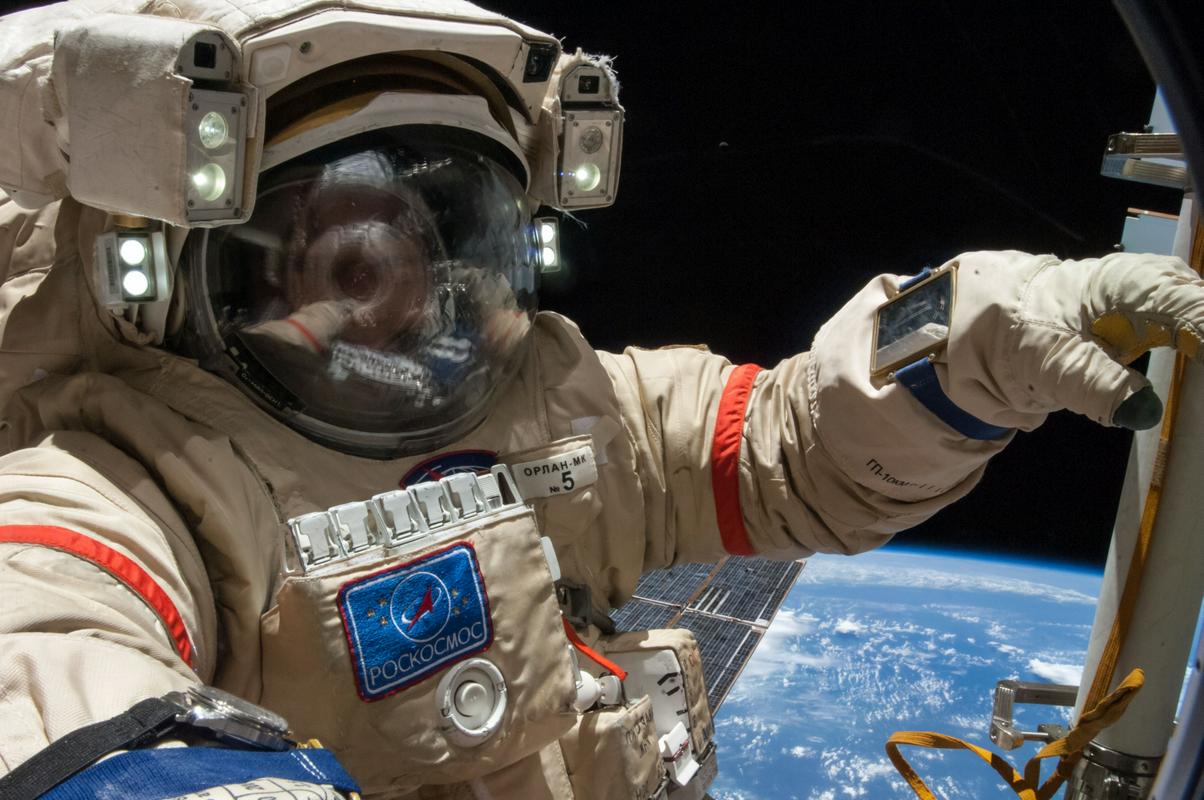
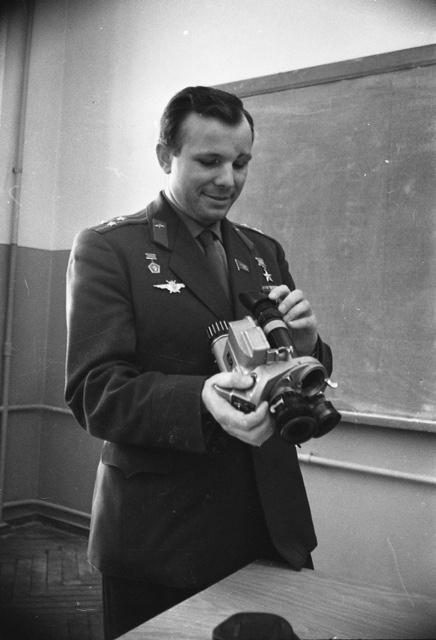
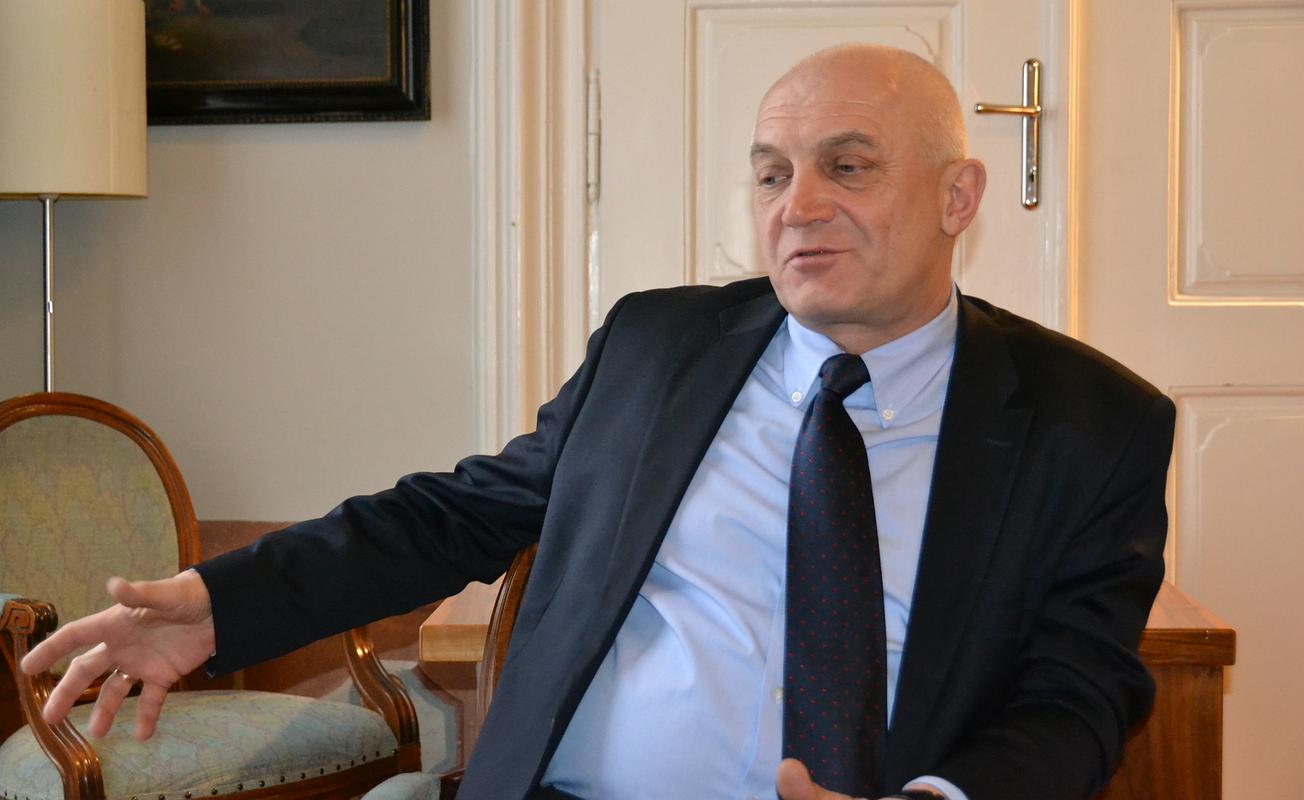
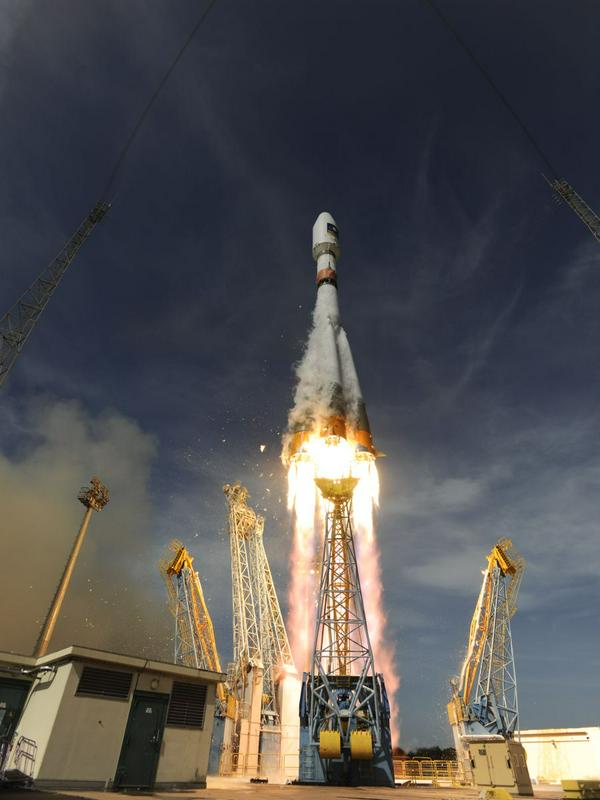
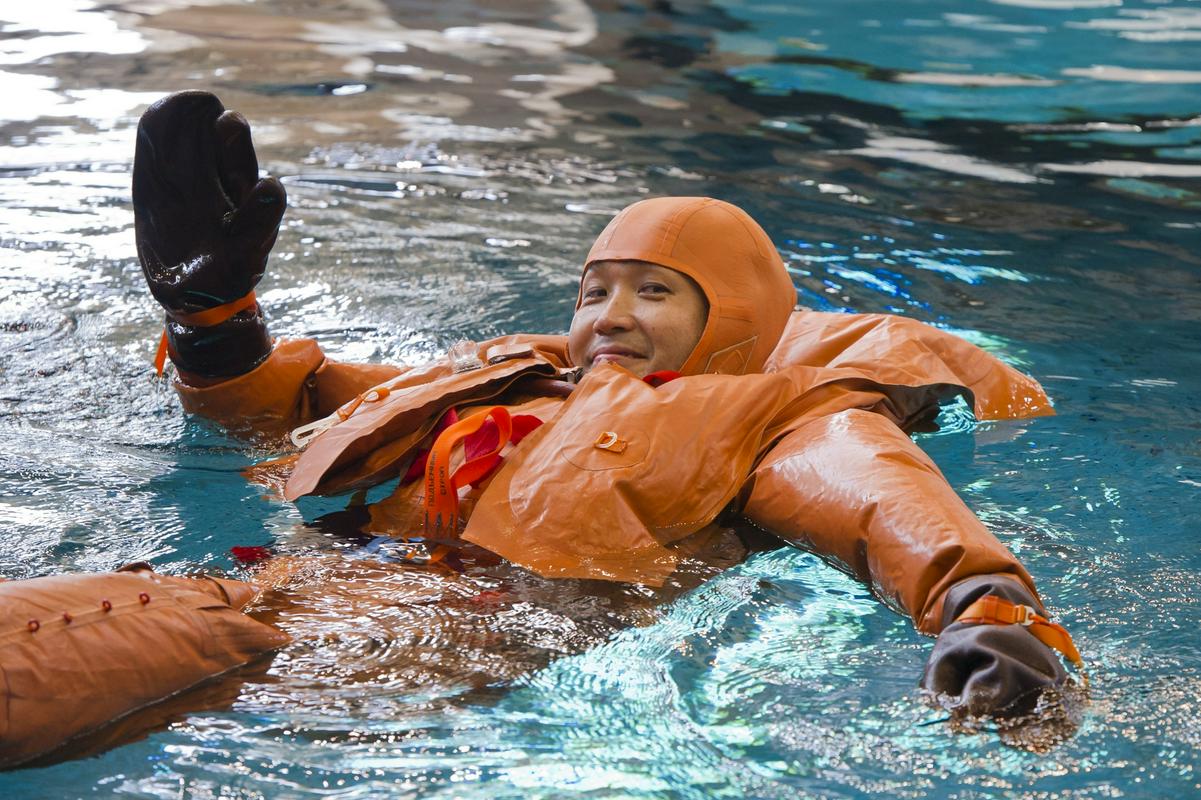
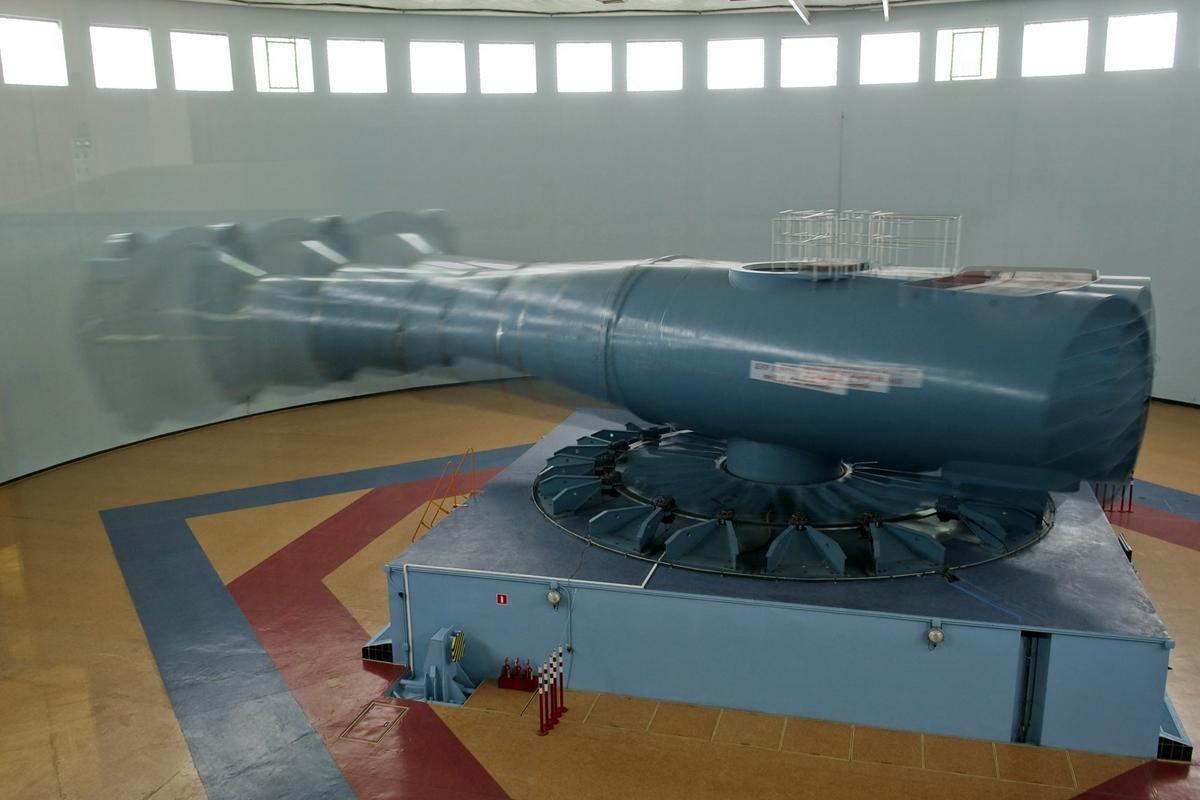
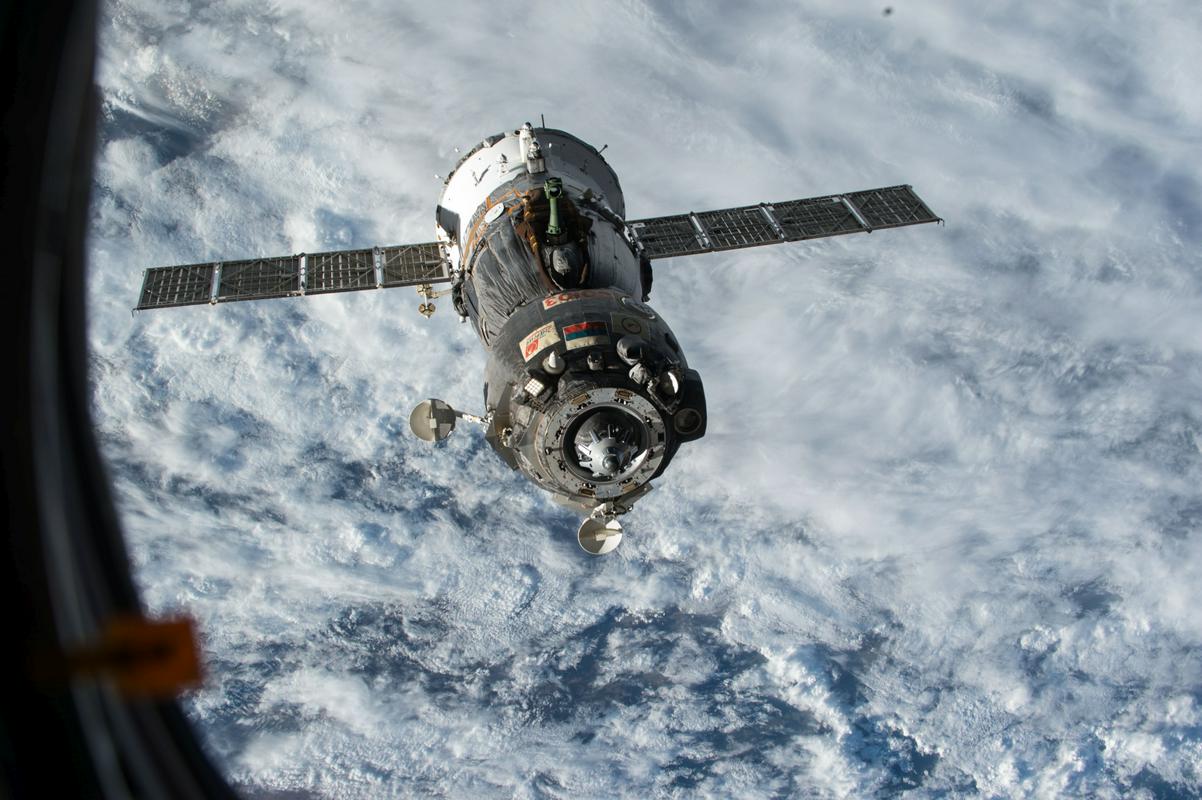

Ever since the Americans retired their Space Shuttle five years ago, the only way to get to the International Space Station (ISS) goes through a place called Zviozdni gorodok or – Star City. It is a place with a long history, a place that saw the birth of the almost entire space program of the old Soviet Union, and much of Russia's space program. Anyone who has ever ventured into space in the last decade has become acquainted with the area (except for the Chinese who are developing their own space station).
Igor Rudyaev makes sure that all cooperation between Roscosmos and the U.S, Canada, Japan and member states of the European Space Agency runs smoothly. These days he is visiting Slovenia. The Russian space agency is showcasing a collection of historical cameras which were used by cosmonauts to make photographs in space. Among the exhibits are also cameras used to make the first ever images of Earth from a spaceship.
The Star City administration brought the exhibition to the Cultural Centre for European Space Technologies - Ksevt in Vitanje, Slovenia. The official opening of the exhibition will take place on Friday at 6pm.
MMC caught up with Mr. Rudajev, the "foreign minister" of the Star City, for a handful of questions.
_____________________________
Mr Rudyaev, you work at the famous Star City. What is your role there?
I started more 30 thirty years ago as a software specialist. Then I was an instructor for crew training. In 1992 it was decided to establish an external office at Star City for international cooperation and I am now in charge of it. We are part of the Gagarin Cosmonaut Training Center (GCTC), partners at the International Space Station (ISS) project with Nasa and other space agencies. Besides that we also have a very close relationship with Esa. We work very close with the European Astronaut Centre in Cologne. Right now Esa has british astronaut Tim Peake aboard the ISS.
There are huge joint activities taking place. Not just in space. We need each other before they go up to prepare everything on Earth, from what and where to move to how to train the crews. And the intercultural relations are very important. The Japanese space agency Jaxa is also a part of the ISS project and their astronauts were aboard. You can imagine not only languages, the cultures are also very different. But they need to work together. Therefore it is important that we coordinate the work between different partners and the GCTC well. As a part of Roscosmos, of course.
How can cultural differences get in the way of cooperation? What obstacles do you face?
First of all, it is good will of participants. We started cooperating with Esa in 1994, when the first European astronaut flew aboard the MIR space station. It was a problem. It was a problem for the astronauts too. But they are professionals. They could subtract the less imporant aspects. They could mark what is the most important thing here. It is also a cultural thing. The crews are international now. Crew members need to work with each other for more than two years before they go to space. This is one way to success - with alot of goodwill from their side. You need to understand that they are professionals. And engineering is a kind of an international subject right now.
As you know the official language on board of the ISS is English. But on Soyuz - and right now, all the crews are delivered by Soyuz - the official language is Russian. And the Japanese need to study both. They also need to study Russian and American culture, because they need to spend one year in each country respectively. This is not that hard for Russian cosmonauts or American astronauts. But the Jaxa astronauts can spend approximately a single week in Japan in this time, so they can arrange some things at their home agency. Same applies to the European folks. So it is very important they understand each others cultural differences. It must not be a barrier. Intercultural relations help us understand each others problems and pay more attention to the activities on board.
Every single astronaut that goes to space needs to train at the Star City first? Do you meet all those people?
All ISS crew members need training at the GCTC. It is obligatory. They come here in sessions of four to five weeks, then they go back to United States for six weeks, then they come back here and start again. For our partners we provide training on the Russian systems on the ISS. Mostly it is life support and environmental support. There is also the Soyuz vehicle of delivery that they need to get accustomed to. When the Space Shutttle was the main delivery means to the ISS, Russians spent much more time training in the United States.
It seems the main focus of ROSCOSMOS at the moment is maintaining the human spaceflight capacities and human presence in the low orbit.
I must stress that while I am a representatitve of ROSCOSMOS, I am part of the Gagarin centre. This is ground infrastructure. It is space infrastructure, but on the Earth. We do investigations on deep space flights, not only low orbit. We are responsible for human flights, but Roscosmos has many other responsibilites and is facing many more challenges. As a part of federal space programme there is a new cosmodrome, new human spaceflight systems, like the rocket Angara and transport vehicle Federatsiya, which could deliver six persons to the ISS. There are multiple focuses.
Can you reveal some more about this new Federatsiya space ship? How far in the development is it?
I have seen the design and layout. I was inside of it during the MAKS air show, as you know, that show happens every two years in Moscow. I understand there are also some difficulties, connected to the financing and budget. But we move ahead. Hopefully we will see the first launch for Vostochny cosmodrome in 2020.
So Federatsiya will replace the famous, long running Soyuz space ship?
Yes. We consider it. Federatsiya is much bigger than Soyuz. There is actually very little space inside Soyuz space capsule. Scott Kelly is not a tall guy. But when he got inside, he said: "Folks, I think I am pretty tall." Federatsiya brings new capacities, from four to six passengers, new approach to life support systems and motion control. But in general, it is not like a big breakthrough, it is a step forward. Big breakthroughs will maybe come when we have nuclear propulsion systems, which are now science fiction.
Is it also designed with deep space travel in mind?
In the future, yes. Techically that is not easy to do right now. We are not ready, noone on the Earth is. We have to think of new propellants, new propulsion system. Then we will see what happens. But Mars is definitely a destination.
Is it true that Russia intends to make its own space station after the ISS project ends its operations?
Maybe you just heard some rumors. I cannot confirm this. It is decided that the ISS project will last until 2024. Russia decided to join in and to continue. Then, we will see. Might be another station, might be a joint project with the Chinese partners, maybe with US partners ... we will see.
How is cooperation with Esa proceeding? The Luna 27 lander is underway and probing the possibilites for a Lunar colony.
Cooperation between Esa and Roscosmos is pretty close and it takes many directions, be it manned or unmanned spaceflight. You might have heard that next March a Proton rocket should deliver a European payload to an asteroid to pick up some soil and get it back to the Earth. [What Rudyaev had in mind was most likely the ExoMars mission.] We also do alot of very tought, but again pretty important and close cooperation on the area of biomedical research.
This will become increasingly important as more and more global players are announcing their plans for various deeps space missions, be it long distance flight or even Lunar and Martian colonies. Your institution does alot of research on how the space affects the human body. What have you found out over the years?
I must stress I am not a medical researcher and the science of life is a space for itself [laughs]. There are alot of misteries in the human body and its relation to space - especially outer space. It is not exactly friendly. What has been found out? No revolutionary things. It is a very tough work. We do move forward, but very slowly, step by step. We research the field of effects on cardiovascular system, on muscles and neurophysiology. Although within a few days astronaut will come from from the ISS who has been there for a year. On the ground his physical state and abilities will be thoroughly tested. Anyway, I am not a researcher myself, not an expert on this field, therefore I prefer not to speak about the findings.
But indeed you are an expert on the Japanese astronauts. Not only you manage the cooperation with Jaxa, you are a unique person who had an insight in two very important space agencies. Roscosmos, and you have worked for Jaxa's predecessor as well. What can you tell us about the differences in the culture of organization? If there are any noteworthy?
I indeed worked for NASDA, and it was great. I did find differences, but I do not really want to compare. Maybe this: in Japan, they make the decisions very slowly. They want to reach a very deep level of understanding of an issue before they decide what to do. They study the problem from all possible sides. In Russia we say, that you need to measure seven times before you make one cut. In Japan, they measure 100 times and it helps alot. And when they make that decision, they follow it in all details.
How about cultural things? Well, I am an old man. It is easy for me to say 'it does not matter, thank you very much', and utter it in a proper way. And patience. Yes, definitely, this was a great lesson in patience for me [laughs]. It was definitely a unique experience.
You were also a part of the First African in Space project.
He investigated all my life under the microscope [laughs]. I already forgot it. Mark Shuttleworth was the second self-funded space tourist and the first African in space, actually, aboard the Space Station. Yes, in 2002 I helped him through all his training in Star City.
You have accompanied into Slovenia a very special collection of historic items. Which one is your favourite and what it is about it that inspires you?
The Konvas camera. It was a real surprise to me that Gherman Titov took the first photos of Earth from the space using that camera. This camera is over here now, in Slovenia, and it is a unique thing. And the Vostok visor is impressive as well.
Today we have the most advanced technology on board of the ISS. No problems. But with Titov it was just the second flight, the new experience of microgravity and noone had done it before. Right now, we are fans of digital technologies everywhere, in communications, video, photo ... But as we can see, the unique photos were made by a rather simple, analogue equipment from 55 years ago.
Zvyozdny gorodok still unites representatives from very different cultures and nations. It is a place of cosmopolitanism, unification and cooperation, as is the ISS. But do you believe it will continue to be so even when mankind finds a way to tap the precious resources from celestial bodies? Or will conflict slowly take over?
We must strive to share our experiences better. We must tell how we could cooperate in the area of space. We did not care about the politics and we pulled it through. In ten days, Mikhail Korniyenko will come back from space along Scott Kelly. After one year. Before their flight I asked Mikhail: "What do you think of it?" He replied: "If we could just get the presidents of USA and Russia to live aboard the ISS for seven days, all the problems between the nations would be resolved immediately."
I cannot stress this enough: it would be great if the presidents of countries all over the world would spend just a week together on the ISS. It is a mind and perspective changing experience. All political problems - at least those of international relations - would definitely be resolved.
In the area of space, we sure have differences, even in technological. But finaly we go together in the same direction. It is really very important. And it is possible to resolve, because first of all, there is a crew on board. That is why technicians and managers on the Earth should think first about the crew who is flying over and working for all the mankind.
Aljoša Masten, MMC

































































